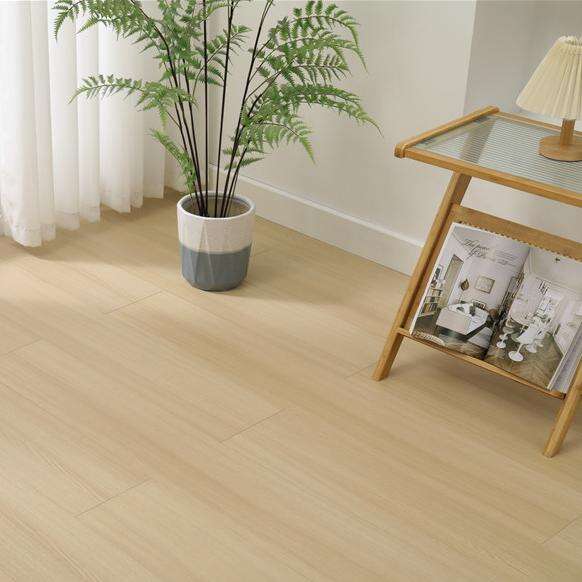Understanding Advanced Industrial Flooring Solutions
Industrial facilities require robust, reliable, and long-lasting flooring solutions that can withstand heavy machinery, constant foot traffic, and various chemical exposures. The three-layer floor system has emerged as the gold standard in industrial applications, offering unprecedented durability and protection. This innovative flooring solution combines multiple specialized layers to create a seamless, high-performance surface that meets the demanding requirements of modern industrial environments.
The sophisticated engineering behind three-layer floor systems represents a significant advancement in industrial flooring technology. Each layer serves a specific purpose, working in harmony to provide superior protection and performance. From manufacturing plants to warehouses, this flooring solution has proven its worth across diverse industrial settings, delivering exceptional results in terms of longevity, safety, and maintenance efficiency.

Components and Structure of Three-Layer Floor Systems
Primary Foundation Layer
The foundation layer serves as the crucial base of the three-layer floor system. This initial layer is specifically designed to create a strong bond with the concrete substrate while providing a stable foundation for subsequent layers. High-quality epoxy primers are typically used in this layer, penetrating deep into the concrete pores to ensure maximum adhesion and structural integrity.
The foundation layer also acts as a moisture barrier, preventing potentially damaging vapor transmission from the concrete substrate. This protective feature is particularly important in industrial environments where moisture control is critical for maintaining floor integrity and preventing bacterial growth.
Intermediate Build Layer
The middle layer of a three-layer floor system consists of a robust build coat that provides the bulk of the floor's physical properties. This layer is typically composed of high-solid epoxy or similar materials that offer excellent impact resistance and load-bearing capabilities. The build layer can be customized with various additives to enhance specific properties such as chemical resistance or thermal stability.
Additionally, this intermediate layer helps to level any minor imperfections in the substrate, creating a smooth surface for the final topcoat. The thickness of this layer can be adjusted based on specific industrial requirements and expected load conditions.
Performance Benefits in Industrial Settings
Enhanced Chemical Resistance
Three-layer floor systems excel in environments where chemical exposure is a daily concern. The specialized composition of each layer creates a virtually impenetrable barrier against a wide range of chemicals, including acids, alkalis, solvents, and other industrial compounds. This superior chemical resistance helps prevent floor deterioration and maintains workplace safety standards.
The multi-layer structure also provides redundant protection - if one layer becomes compromised, the underlying layers continue to protect the substrate. This built-in safeguard significantly extends the floor's service life and reduces the risk of chemical-related damage.
Superior Impact and Abrasion Resistance
Industrial environments often subject flooring to extreme physical stress through heavy equipment operation, material handling, and constant traffic. The three-layer floor system's graduated structure efficiently absorbs and distributes impact forces, preventing damage to both the flooring system and the underlying concrete substrate.
The combination of layers creates a surface that resists wear patterns and maintains its integrity even under the most demanding conditions. This exceptional durability translates to reduced maintenance requirements and longer intervals between major repairs or replacements.
Maintenance and Longevity Considerations
Preventive Care Protocols
While three-layer floor systems are incredibly durable, implementing proper maintenance procedures can significantly extend their service life. Regular cleaning with appropriate industrial cleaners helps prevent the accumulation of potentially damaging substances. The smooth, seamless surface of these floors makes cleaning operations more efficient and effective.
Establishing a scheduled inspection program allows facility managers to identify and address any signs of wear before they develop into more serious issues. This proactive approach to maintenance helps preserve the floor's protective properties and aesthetic appearance.
Long-term Cost Benefits
The initial investment in a three-layer floor system is often higher compared to simpler flooring solutions. However, the extended service life and reduced maintenance requirements result in significant long-term cost savings. The superior durability means fewer repairs and replacements, while the protective properties help prevent costly substrate damage.
Additionally, the enhanced safety features of three-layer floors can help reduce workplace accidents and associated costs. The consistent, slip-resistant surface maintains its properties throughout its service life, providing reliable protection for workers and equipment.
Installation Considerations and Best Practices
Surface Preparation Requirements
Successful installation of a three-layer floor system begins with proper surface preparation. The concrete substrate must be thoroughly cleaned, profiled, and tested for moisture content. Any existing damage or weaknesses in the substrate should be addressed before installation begins to ensure optimal performance of the new flooring system.
Environmental conditions during installation, including temperature and humidity levels, must be carefully controlled to ensure proper curing of each layer. Professional installers use specialized equipment and techniques to achieve the required thickness and consistency for each layer.
Quality Control Measures
Throughout the installation process, various quality control measures are implemented to ensure optimal results. These include thickness testing, adhesion testing, and visual inspections of each layer. Proper curing times between layers must be observed to achieve the intended chemical and physical properties of the finished floor system.
Documentation of installation conditions and quality control results provides valuable reference information for future maintenance and warranty purposes. This systematic approach to installation helps ensure the three-layer floor system delivers its full performance potential.
Frequently Asked Questions
What is the typical lifespan of a three-layer floor system?
With proper maintenance and normal industrial use, a three-layer floor system can last 15-20 years or more. The actual lifespan depends on factors such as traffic patterns, chemical exposure, and maintenance practices.
Can a three-layer floor be repaired if damaged?
Yes, localized damage to three-layer floors can often be repaired without replacing the entire system. Professional contractors can match existing materials and seamlessly integrate repairs into the surrounding floor area.
How soon can operations resume after installation?
While light foot traffic may be possible after 24 hours, full industrial operations typically require 72 hours or more after installation for complete curing. The specific timeline depends on environmental conditions and the types of materials used.


